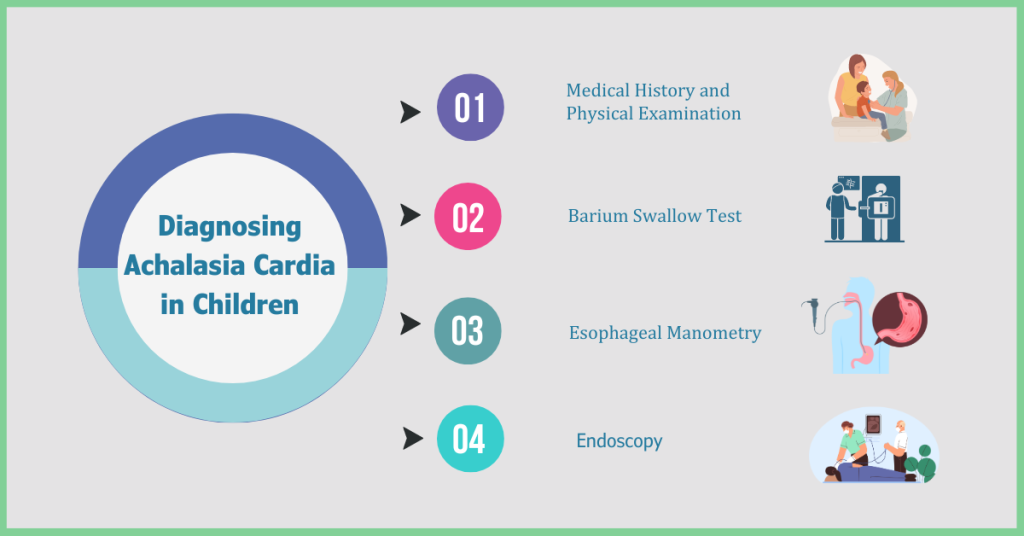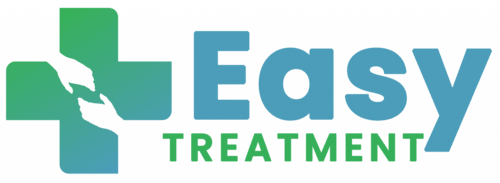Achalasia cardia in children is a rare disorder impacting the esophagus, characterized by the lower esophageal sphincter’s inability to relax, hindering the passage of food into the stomach and causing difficulty in swallowing. This condition, though uncommon in children, demands swift medical attention for effective management.
Definition of Achalasia Cardia
Achalasia cardia is a motility disorder of the esophagus, where the muscles of the esophageal wall and the LES do not function properly. This results in the accumulation of food in the esophagus, causing symptoms such as difficulty swallowing, regurgitation of undigested food, and chest pain.
Prevalence in Children of Achalasia Cardia
Although achalasia cardia is more commonly diagnosed in adults, it can also affect children. The exact prevalence of achalasia cardia in children is not well-documented, but it is considered to be a rare condition in paediatric patients.
Achalasia cardia in children can present unique challenges due to the differences in symptoms and diagnostic approaches compared to adults. The condition may often be misdiagnosed in paediatric patients, leading to delays in appropriate treatment.
Additionally, the impact of achalasia cardia on a child’s growth and development should be carefully monitored, as it can affect their nutritional intake and overall well-being. Further research and awareness are needed to better understand and address the specific needs of children with achalasia cardia.
Causes of Achalasia Cardia in Children

The exact cause of achalasia cardia in children is not fully understood. It is believed to occur due to the degeneration of the nerves in the esophagus, leading to impaired muscle function. Genetic factors, autoimmune reactions, and viral infections have also been suggested as potential causes of achalasia cardia in children.
Further research is needed to fully understand the underlying causes of achalasia cardia in children. Studies have shown that certain genetic mutations may play a role in the development of this condition, and autoimmune reactions could potentially contribute to the degeneration of the esophageal nerves. Additionally, viral infections have been proposed as a triggering factor for achalasia cardia in some cases. Understanding these potential causes is crucial for developing more effective treatment strategies and improving the overall management of achalasia cardia in children.
Symptoms of Achalasia Cardia in Children
The symptoms of achalasia cardia in children can vary in severity, and some of the most common ones include:
Difficulty Swallowing
Children with achalasia cardia often experience difficulty in swallowing, known as dysphagia. This can lead to a sensation of food getting stuck in the chest or throat while eating.
Regurgitation of Undigested Food
Regurgitation of undigested food is a common symptom of achalasia cardia in children. The food that fails to pass through the LES may come back up into the throat or mouth, causing discomfort and distress.
Chest Pain
Children with achalasia cardia may experience chest pain, which can be sharp or dull and is often felt behind the breastbone. This pain can worsen after eating or drinking.
Weight Loss
Due to the difficulty in swallowing and regurgitation of food, children with achalasia cardia may experience weight loss and malnutrition, which can affect their overall growth and development.
Heartburn
Heartburn, also known as acid reflux, is another common symptom of achalasia cardia in children. It occurs when the stomach acid flows back into the esophagus, causing a burning sensation in the chest.
Diagnosing Achalasia Cardia in Children

Diagnosing achalasia cardia in children involves a series of medical evaluations and tests to confirm the condition. Some of the diagnostic procedures include:
Medical History and Physical Examination
The healthcare provider will review the child’s medical history and perform a physical examination to assess the symptoms and overall health. This may involve discussing the child’s eating habits, any discomfort during swallowing, and the duration and severity of the symptoms.
Barium Swallow Test
A barium swallow test, also known as an esophagram, involves the child swallowing a barium solution while X-rays are taken to visualise the movement of the liquid through the esophagus. This test can help identify any abnormalities or blockages in the esophagus.
Esophageal Manometry
Esophageal manometry is a procedure used to measure the pressure and muscle contractions in the esophagus. It helps in evaluating the function of the LES and the esophageal muscles, providing valuable information for diagnosing achalasia cardia.
Endoscopy
An endoscopy involves the insertion of a flexible tube with a camera through the mouth into the esophagus and stomach. This allows the healthcare provider to visually inspect the esophageal lining and look for any signs of inflammation, narrowing, or blockages.
Treatment Options for Achalasia Cardia in Children
The treatment of achalasia cardia in children aims to alleviate symptoms, improve swallowing function, and prevent complications. Some of the treatment options include:
Medications
Achalasia balloon dilation, also known as pneumatic dilation, is a procedure that involves inflating a balloon in the LES to stretch and widen the opening. This helps to improve the passage of food into the stomach.
Heller Myotomy
Heller myotomy is a surgical procedure that involves cutting the muscles at the lower end of the esophagus and the LES to reduce the pressure and allow for better food passage.
Peroral Endoscopic Myotomy (POEM)
Peroral endoscopic myotomy is a minimally invasive procedure that uses advanced technology to access and cut the muscles of the esophagus and LES, similar to Heller myotomy, but without external incisions. Unlike traditional surgical procedures, POEM is performed entirely through the mouth and does not require any external incisions. Instead, a specialized endoscope is inserted through the mouth and guided down into the esophagus. From there, the surgeon makes precise cuts in the muscles of the esophagus to help improve its function and relieve symptoms. This approach offers several benefits, including reduced post-operative pain, shorter recovery times, and minimal scarring. Overall, POEM represents an innovative and effective option for individuals seeking relief from achalasia symptoms. Achalasia cardia in children is a complex condition that requires careful evaluation and management by paediatric gastroenterology hepatology specialists. With the advancement of medical technology and treatment options, children with achalasia cardia can receive timely and effective care to improve their quality of life.
It is essential for parents and caregivers to be aware of the symptoms and seek prompt medical attention for proper diagnosis and treatment. If you suspect that your child may be experiencing symptoms of achalasia cardia, consult a paediatric gastroenterologist for a comprehensive evaluation and personalised care.

